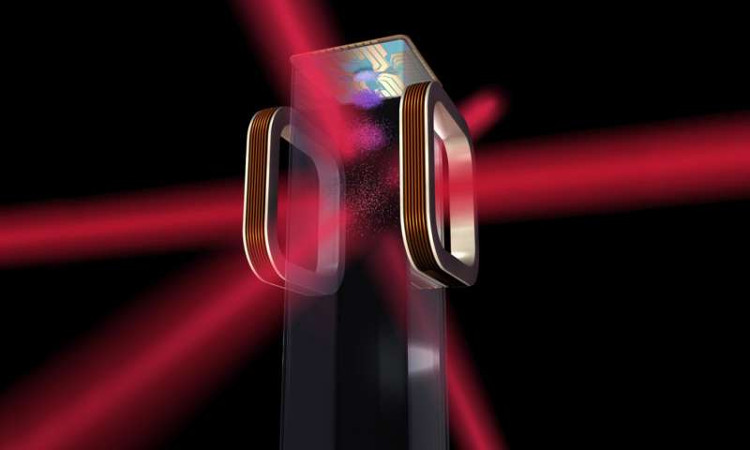NASA wants to create the coldest point in the universe
NASA plans to bring a device to the ISS station to create a 100 million times more cold space than space.
The US aerospace agency (NASA) plans to conduct an experiment to create the coldest point in the entire universe in August this year. The device will be placed in a box and put on the International Space Station (ISS), Phys.org on March 6 reported.
Inside the box is a laser generator and "blade" of electrical energy from the same vacuum compartment. They will combine to suppress the gas atomic energy, making them so slow that they almost stop moving. The device is called the Cold Atomic Laboratory (CAL) designed by NASA. CAL is in the final assembly stage, before putting up space on SpaceX CRS-12 rocket.

The laser will cool atoms to unprecedented low temperatures.(Photo: NASA).
Gas atoms can be cooled to 1 part ratio above absolute zero (-273.15 degrees C). That turns them into the coldest point in space, 100 million times colder than space.
"Researching super-cold atoms can change people's understanding of matter, as well as the true nature of gravity. The experiment we do with CAL will provide information about gravity and energy. Dark, the most common forces in the universe, " said Robert Thompson of the CAL project.
When atoms are cooled to the expected extent, they will form a material state called the "Bose-Einstein condensate" (BEC). Familiar physics laws will lose meaning and quantum physics begins to have a bigger impact.
NASA has never observed or created BEC in space. On Earth, gravity causes the atom to be continually sucked to the ground, making them visible only in extremely short time. In the gravityless state of the ISS, supercooling atoms will keep the BEC state longer. CALs allow this material to last from 5 to 10 seconds, even longer with future technology.
This test can also promote the detection of dark matter. The current astronomical model divides the universe into 27% of dark matter, 68% of dark energy and only 5% of ordinary matter. With all the current technology, people still cannot observe 95% of the universe. CAL can open many secrets, far beyond the limits of today's physics.
- Scientists create electricity from the coldest space in the universe
- NASA creates a cold point 10 billion times more than a vacuum
- Discover the coldest place on earth
- Boomerang - The coldest region in the universe
- The coldest place in the universe has a boomerang
- The most cold place in the universe turned out to be right in our Earth orbit
- NASA returned to the moon?
- Dark matter may be behind the universe's death
- NASA opens the door to document 140,000 stunning images of the universe for the whole world
- NASA is about to launch bright colored clouds into the universe
- NASA will send people to the Moon by Russian ships
- This swirling trail may be a trace of a dead universe that exists before the universe we know
 Van Allen's belt and evidence that the Apollo 11 mission to the Moon was myth
Van Allen's belt and evidence that the Apollo 11 mission to the Moon was myth The levels of civilization in the universe (Kardashev scale)
The levels of civilization in the universe (Kardashev scale) Today Mars, the sun and the Earth are aligned
Today Mars, the sun and the Earth are aligned The Amazon owner announced a secret plan to build a space base for thousands of people
The Amazon owner announced a secret plan to build a space base for thousands of people